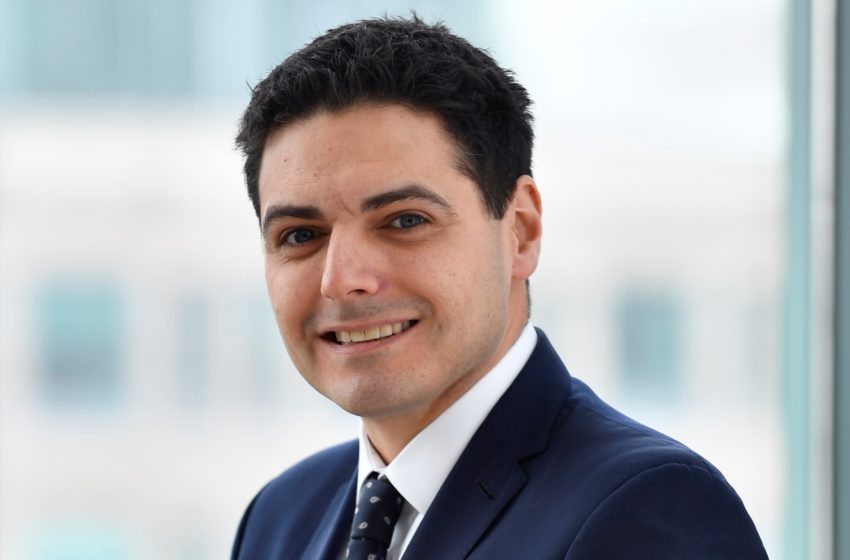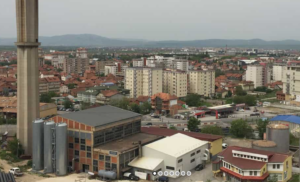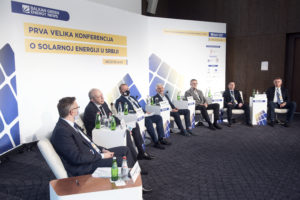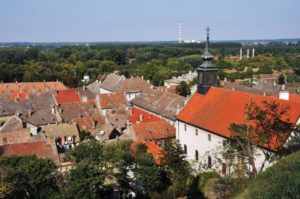“Reducing the level of harmful air pollutants is vital”
March 5, 2021
Be it the Western Balkans, Mongolia or Kazakhstan, Greg Gebrail is there to offer technical and policy support for solar district heating. As Principal District Energy Specialist at the London-based European Bank for Reconstruction and Development (EBRD), he is a member of the Sustainable Infrastructure Group, which delivers about 100 signed projects in the energy, transport, and social and municipal infrastructure sectors each year, over one-third of the bank’s annual business activity. Gebrail and his colleagues help municipalities explore their clean heat options, often in an attempt to lower air pollution caused by poor-quality coal-fired boilers.
Which of the EBRD countries of operation hold the most promise for solar district heating?
Gebrail: The best immediate opportunities for solar district heating are in the six Western Balkans nations that are not yet in the European Union. In particular, I believe Bosnia and Herzegovina, Kosovo and Serbia offer the best combination of good solar resource and a widely established district energy sector.
In 2018, you launched the Renewable District Energy in the Western Balkans project. What have been the key lessons learned from promoting SDH throughout the region?
Gebrail: Local knowledge is key – getting my colleague Bojan Bogdanovic on board in 2019 to manage the ReDEWeB fund was crucial. Bojan is based in Serbia and he knows the sector and the major stakeholders well. Political buy-in is very important for public sector projects – cities face competing investment priorities and a supportive mayor or minister makes a big difference.
I also learned more about the air quality crisis, much of which can be attributed to poor quality individual heating furnaces which are used throughout the region. The case for solar district heating and more renewable heat supply isn’t strictly focused on decarbonisation, reducing the level of harmful air pollutants is also vital.
We realised as well that the lack of an emission trading system like the EU ETS is an obstacle to cleaner technologies, as existing fossil fuel based plants operate at artificially low costs.
What other countries besides those in the Western Balkans have potential for SDH?
Gebrail: We are active in Mongolia as well as the Central Asian countries of Kazakhstan, Uzbekistan and Kyrgyzstan. These countries are the next big opportunities for solar district heating. There is a good solar potential and reasonable land availability, but regulatory improvements are absolutely necessary. The heat tariffs for the population are historically very low and flat rate tariffs are still used that do not reflect individual consumption. This makes new investments rather difficult.
What sort of solutions did you discuss with public stakeholders in these countries?
Gebrail: It is clear that we cannot just tell stakeholders to raise the tariffs for every client without improving service levels or addressing reliability. Tariff increases should be accompanied by an improvement or investment programme to ensure consumer buy-in. Our recommendation is to implement more individual consumption-based metering and billing, and rather than setting tariffs at an artificially low level for all customers, provide targeted subsidies for energy costs for low-income families. We wrote a policy paper on this issue titled Empowering users through fair metering in 2018; the paper drew on the positive experiences in the Baltic countries which have transformed their district energy sectors (for download below).
One country on your SDH list is Mongolia. Could you tell us why?
Gebrail: Mongolia´s capital Ulaanbaatar with its 2 million inhabitants is famous for being the coldest capital city in the world. Air pollution due to heating with low quality coal is a problem in this growing metropolis, over 0.7 million inhabitants use small coal stoves and boilers. When the temperature drops, the air quality index is dangerously high. Smog blankets the city and residents can be seen wearing pollution masks throughout the winter months.
virtual study tour to Silkeborg
How did you convince the Mongolian government of the benefits of SDH?
Gebrail: At the beginning of 2020 we agreed a loan with the state-owned UBDHC (Ulaanbaatar District Heating Company) focused on extension and efficiency improvement of the heat transmission network. During project development, it was noted that the DH system is completely reliant on coal and although Mongolia has an excellent solar resource, there was a need to build up knowledge of renewable or low carbon heating alternatives.
This led to the current study, funded by the Austrian government, in which we are working with the Mongolian government on renewable or waste heat based options for DH supply. We are working with the Danish consultancy COWI and their Mongolian partner ICON and studied 20 different renewable and energy efficiency options. Among the current short list of opportunities is a solar district heating plant with around 70,000 m2 of collectors, for which land of around 200,000 m2 would be necessary. We are also looking into promising opportunities to utilise waste heat from wastewater treatment plants coupled with heat pumps.
The assignment included a “virtual study tour” to Silkeborg, the largest solar district heating plant in Denmark, as the pandemic did not allow travels. A virtual visit is not really the same, but the advantage was that around 30 people were able to follow the digital tour sharing a great deal of details on this large Danish solar heat plant.
What have you found out from the feasibility studies conducted on a potential SDH site in Mongolia’s capital Ulaanbaatar?
Gebrail: The analysis has shown that solar heat will be more expensive than heat from the existing coal-fired CHP plants that have been in operation for many years. This could deflect attention from the long-term benefits of the project. In my opinion, donor support of some kind would be necessary to launch a solar DH project in the city.
In practical terms, solar heat from the proposed project will be injected into the return line of the DH network, as the flow or primary line operates at over 100 °C for parts of the year. The return line has fairly low temperatures ranging from 45 °C to 60 °C, so it makes more sense to focus on preheating the return line with heat from the solar collectors.
Organisations mentioned in this interview:


